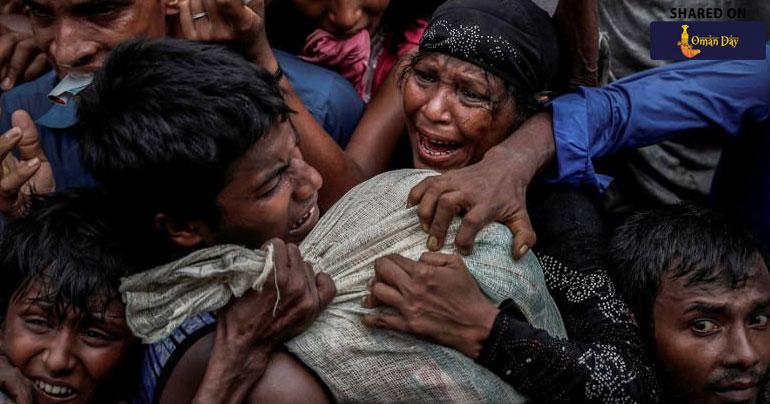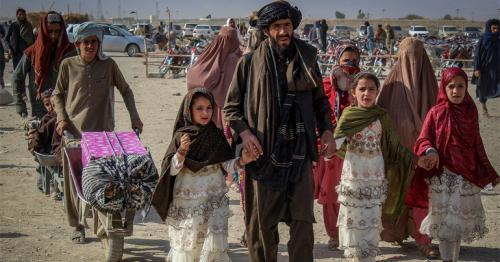Violence against Rohingya exposed in ‘shocking photos’
New York: When a Rohingya refugee boat capsized on the Bangladesh coastline, photographer Damir Sagolj rushed to the scene and saw locals collecting the drowned and arranging their bodies next to the road.
In the torrential night-time rain, the sheets that covered them clung to the bodies.
 Hamida, a Rohingya refugee woman, weeps as she holds her 40-day-old son after he died as their boat capsized before arriving on shore in Shah Porir Dwip, Bangladesh, September 14, 2017. Reuters/Mohammad Ponir Hossain
Hamida, a Rohingya refugee woman, weeps as she holds her 40-day-old son after he died as their boat capsized before arriving on shore in Shah Porir Dwip, Bangladesh, September 14, 2017. Reuters/Mohammad Ponir Hossain
"You couldn't see how many were under the sheets, but what I could see was that most were children," Sagolj said
The photo he captured was one of a series awarded the Pulitzer Prize for feature photography on Monday, described by the judging committee as "shocking photographs that exposed the world to the violence Rohingya refugees faced in fleeing Myanmar."
 before crossing the border from Myanmar in August, is held by his father outside a medical centre near Cox's Bazar, November 5, 2017. Reuters/Adnan Abidi.
before crossing the border from Myanmar in August, is held by his father outside a medical centre near Cox's Bazar, November 5, 2017. Reuters/Adnan Abidi.
The latest crackdown by authorities and Buddhist civilians against the Rohingya population in Myanmar’s Rakhine state created a mass exodus of over 6 lakh Rohingya children, women and men who fled their homes at the end of 2017.
 A security officer attempts to control Rohingya refugees waiting to receive aid in Cox's Bazar, September 21, 2017. Reuters/Cathal McNaughton
A security officer attempts to control Rohingya refugees waiting to receive aid in Cox's Bazar, September 21, 2017. Reuters/Cathal McNaughton
The refugees have reported killings, rape and arson on a large scale, and senior United Nations officials have described the violence against the Muslim Rohingya population as a "textbook example of ethnic cleansing."
 Rohingya refugees are reflected in rain water along an embankment next to paddy fields after fleeing from Myanmar into Palang Khali, near Cox's Bazar, Bangladesh November
Rohingya refugees are reflected in rain water along an embankment next to paddy fields after fleeing from Myanmar into Palang Khali, near Cox's Bazar, Bangladesh November
Myanmar has denied ethnic cleansing or systematic human rights abuses, saying it waged a legitimate counter-insurgency operation. The army has said its crackdown was provoked by the attacks of Rohingya militants on more than two dozen police posts and an army base last August.
 An exhausted Rohingya refugee fleeing violence in Myanmar cries for help from others crossing into Palang Khali, near Cox's Bazar, Bangladesh November 2, 2017. Reuters
An exhausted Rohingya refugee fleeing violence in Myanmar cries for help from others crossing into Palang Khali, near Cox's Bazar, Bangladesh November 2, 2017. Reuters
Reuters has covered the plight of the Rohingya since 2012, but in 2017 it became clear that the scale of this exodus was far larger than previous migrations.
 Smoke is seen on the Myanmar border as Rohingya refugees walk on the shore after crossing the Bangladesh-Myanmar border by boat through the Bay of Bengal, in Shah Porir Dwip, September 11, 2017. Reuters/Danish Siddiqui
Smoke is seen on the Myanmar border as Rohingya refugees walk on the shore after crossing the Bangladesh-Myanmar border by boat through the Bay of Bengal, in Shah Porir Dwip, September 11, 2017. Reuters/Danish Siddiqui
For the next several months, a team of photographers, including Sagolj, Cathal McNaughton, Danish Siddiqui, Soe Zeya Tun, Adnan Abidi, Mohammad Ponir Hossain, and Hannah McKay, working under the direction of Asia Pictures Editor Ahmad Masood, documented the journeys of refugees by sea on rickety fishing boats and over land through barbed wire and along other routes.
 Rohingya siblings fleeing violence hold one another as they cross the Naf River along the Bangladesh-Myanmar border in Palong Khali, near Cox’s Bazar, November 1, 2017. Reuters/Adnan Abidi
Rohingya siblings fleeing violence hold one another as they cross the Naf River along the Bangladesh-Myanmar border in Palong Khali, near Cox’s Bazar, November 1, 2017. Reuters/Adnan Abidi
They also visited refugee camps to tell the stories of the new lives the Rohingya built and the scars they brought with them.
While the size of camps expanded, one thing that never changed was the stories the refugees brought with them.
 Rohingya refugees try to take shelter from torrential rain as they are held by the Border Guard Bangladesh after illegally crossing the border, in Teknaf, August 31, 2017. Reuters/Mohammad Ponir Hossain
Rohingya refugees try to take shelter from torrential rain as they are held by the Border Guard Bangladesh after illegally crossing the border, in Teknaf, August 31, 2017. Reuters/Mohammad Ponir Hossain
"The same horror stories of killings and rape and massacres that we were hearing when the first refugees started crossing in August and September, the exact same – if not worse – stories were being told three months after that," Sagolj said.
 An exhausted Rohingya refugee woman touches the shore after crossing the Bangladesh-Myanmar border by boat through the Bay of Bengal, in Shah Porir Dwip, September 11, 2017. Reuters/Danish Siddiqui
An exhausted Rohingya refugee woman touches the shore after crossing the Bangladesh-Myanmar border by boat through the Bay of Bengal, in Shah Porir Dwip, September 11, 2017. Reuters/Danish Siddiqui
Even as the team captured images of the refugees at their most vulnerable – mourning mothers, scarred children, survivors of violent attacks – the journalists found that the refugees were surprisingly open. The photographers experienced almost no resistance from refugees as they photographed the refugees and asked about their experiences.
"I had the impression that these people want everybody to know what happens to them," Sagolj said."They all really wanted their story to be told."
Share This Post






